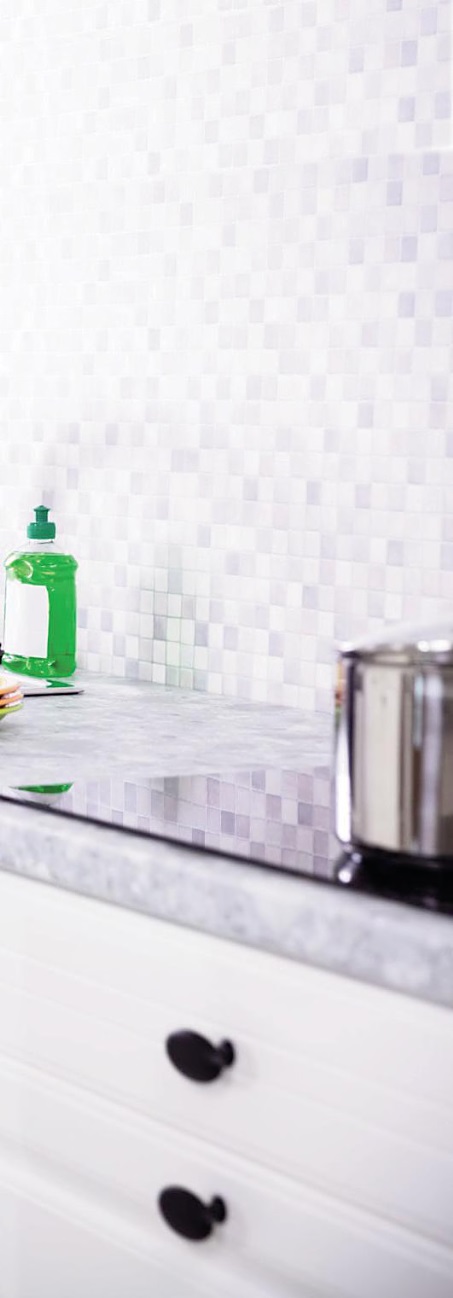
TASK AT HAND: Private homes sometimes require alterations to meet the needs of individuals with disabilities. This process is best accomplished with the assistance of architects and contractors who have experience in these types of renovations; Kitchens should feature knee space under sink counter to allow a wheelchair to pull in, and a high recessed base under the cabinets to accommodate the wheelchair's pedals.
PROJECT STAGES
WORKING WITH DESIGN & BUILDING INDUSTRY
At this stage, it is useful to invite an architect specializing in accessibility design for a walk-thru of your home to become cognizant of issues and your concerns. Such discussions allow the architect to begin to envision design options, and potential involvements of other trades, such as electrical, plumbing and heating and air-conditioning etc.
Generally, the architect suggests bringing in trades people that have worked on similar projects and have developed a working relationship. Important questions center on:
- Would the remodeling happen while the house is occupied?
- What issues would be caused by temporary interruptions in services i.e., water, electrical, heating and air conditioning,
- What level of noise and dust will there be?
- What are the security concerns? e) What neighborhood issues might there be?
- If parking is available for workforce provisions and material supplies/deliveries?
- How will the trash be disposed? and importantly h)What is your level of involvement?
CONCEPT AND PRELIMINARY DESIGN
Using existing house plans and documents etc., if available, the architect starts the design process by preparing basic drawings that show current conditions, and begins to develop potential options for discussion. Upon your choice of preferred design, the architect and the involved trades compile their understanding of the work, a preliminary estimate of cost, as well as an expected construction timeline. This establishes preliminary scope, schedule and budget for the remodel/alteration project, and upon your approval, forms the basis of preparation of estimated cost documents and construction process.
PERMIT AND BIDDING
The architect and other trades coordinate to prepare a set of plans and associated costs for permit, and see the permit process through, prior to finalizing project cost. This may or may not include specific products, equipment/appliances/fixtures depending on your preferences and contract. Being a remodel of existing conditions project, please bear in mind that the cost is subject to change depending on change in design, product availability, hidden conditions, etc.
ITEMS TO CONSIDER
1. FRONT ENTRY WITH STEPS AND ACCESS TO FRONT ENTRY AREA
Generally, this issue can be resolved with re-grading the path leading to the main entry, and finished with pavers.
Accessibility Option: A prefabricated ramp (aluminum exterior grade) is an alternate design solution and can be installed quickly.
2. HALLWAY/PASSAGEWAY WIDTH
Existing homes having narrow hallways/passageways impose difficulties to maneuver with a wheelchair. The preferred option is to widen hallway/passageway to 42” min. or 48” desirable. In situations of placement of narrow shelving or cabinet, increase width 6’0” or more.
3. DOORS AND DOORWAYS WIDTHS:
Narrow doors create issues with the passage of the wheelchair due to maneuvering space around door swings (inward or outward).
Accessibility Option: Replacing existing door hinges with "offset hinges" allows you to gain about 2" in the door opening, Minimum door width for a wheelchair is 32". (preferably 36") Consider sliding doors with a surface mounted sliding mechanism. This option addresses maneuvering space issues due to door swings. The sliding door option is particularly useful in access to smaller spaces.
4. BATHROOMS
Most homes typically have bathrooms that present maneuvering difficulty to access the bathroom fixtures, thus creating tripping hazards because of protruding bathroom amenities and wet-tiled floor, etc.
Roll-in or Walk-In Shower: Consider replacing the bathtub by installing a shower base. This transforms the bathroom into a single continuous space, with